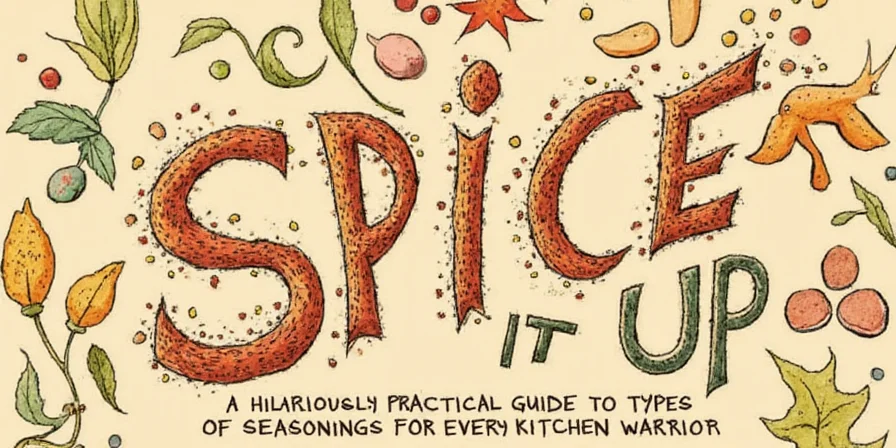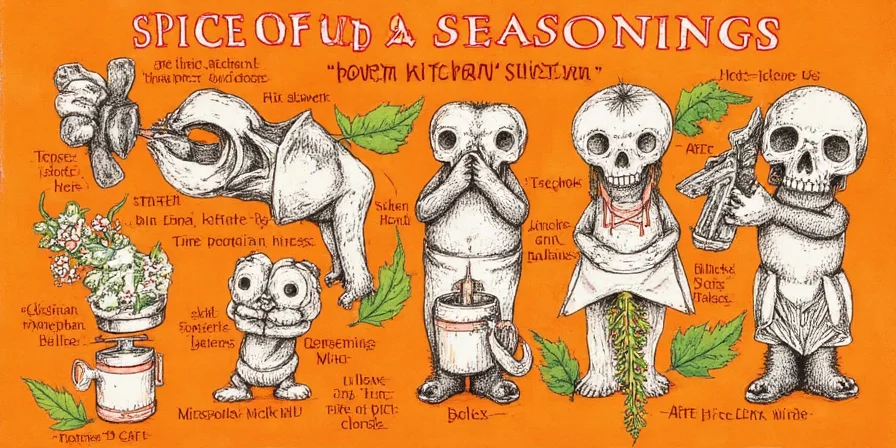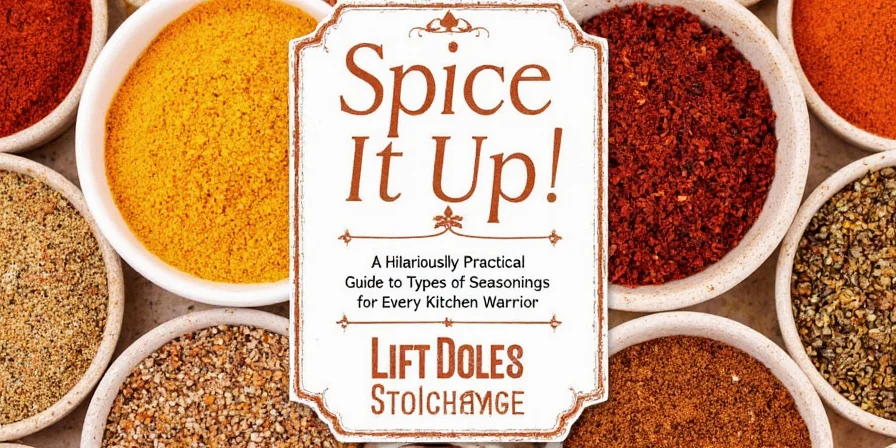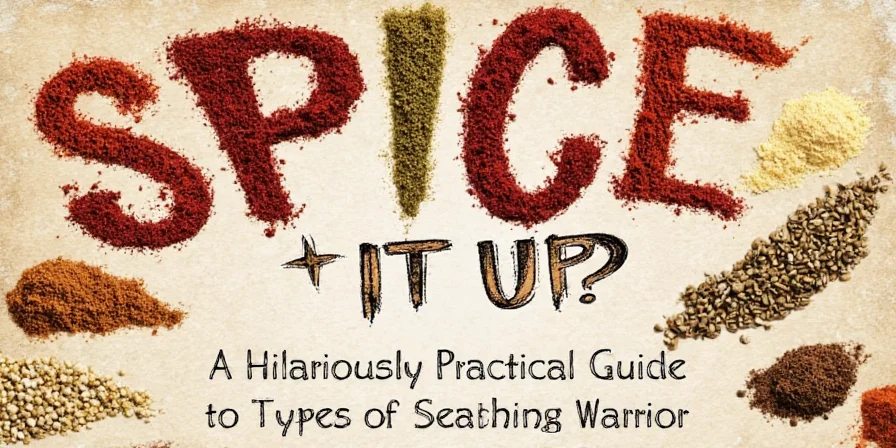Struggling with bland dishes no matter how much seasoning you add? You're not alone. Most home cooks make three critical seasoning mistakes that undermine flavor development: adding salt too late, using dried and fresh herbs interchangeably, and not understanding flavor layering principles. This guide reveals the scientifically-proven seasoning framework professional chefs use to create consistently exceptional dishes - and how to implement it in your home kitchen starting today.
Unlike generic seasoning tips, this guide explains exactly when to add each seasoning based on chemical properties, how to balance flavors using Chinese culinary principles, and what to do when dishes taste flat even after seasoning. You'll learn actionable techniques that transform ordinary meals into extraordinary culinary experiences.
What You'll Learn in This Guide
- Why 90% of home cooks add salt at the wrong time (and what to do instead)
- The exact timing for adding 5 seasoning categories based on scientific principles
- How Chinese "diao wei" flavor balancing creates restaurant-quality results
- Solutions for common seasoning problems like flat-tasting dishes and bitter flavors
- A step-by-step seasoning workflow that works for any recipe
The Three Critical Seasoning Mistakes Home Cooks Make
Before diving into solutions, understand these common pitfalls that sabotage your seasoning efforts:
- Adding salt too late - Salt needs time to modify protein structures and suppress bitterness; adding it at the end only seasons the surface
- Misunderstanding herb vs spice timing - Fresh herbs added early lose volatile compounds, while dried herbs need time to rehydrate
- Ignoring flavor layering sequence - Different compounds integrate at different rates; proper order is essential for balanced results

Seasoning Fundamentals: Building Flavor from the Ground Up
Effective seasoning isn't about randomly adding ingredients - it's a precise process of building flavor layers that complement rather than compete. Professional kitchens follow this sequence:
- Salt early to enhance natural flavors and modify protein structures
- Add fat-soluble spices next (bloom in oil for maximum extraction)
- Incorporate dried herbs to allow time for rehydration
- Finish with fresh herbs and acids to preserve volatile compounds
This sequence works because different flavor compounds integrate at varying rates based on their chemical properties. Understanding this seasoning timeline prevents common issues like bitter flavors or flat-tasting dishes.
Five Essential Seasoning Categories and When to Use Them
Master seasoning by understanding these five categories and their optimal application:
- Basic Enhancers (salt, acid, fat) - Create flavor foundation
- Umami Sources (soy sauce, mushrooms) - Amplify overall flavor perception
- Spices - Provide depth and complexity
- Herbs - Add bright finishing notes
- Blends - Deliver culturally refined flavor profiles

Seasoning Timeline: Optimal Timing for Maximum Flavor
| Seasoning Type | Key Compounds | When to Add | Why This Timing Works |
|---|---|---|---|
| Salt | Sodium ions | First, at seasoning stage | Modifies protein structures, suppresses bitterness, enhances natural flavors |
| Whole Spices | Oil-soluble compounds | After aromatics, before liquids | Blooms in oil for maximum extraction without burning |
| Dried Herbs | Concentrated volatile oils | With liquids, 20-60 minutes before finish | Needs time to rehydrate and release compounds |
| Fresh Herbs | Water-soluble volatile oils | Final 2-5 minutes or after cooking | Preserves delicate aromatic compounds |
| Acids (vinegar, citrus) | Organic acids | Final seasoning adjustment | Brightens without dissipating volatile compounds |

Fix Common Seasoning Problems: Expert Solutions
When your dish doesn't taste right, these targeted solutions work better than generic "add more salt" advice:
Problem: Dish tastes flat even after seasoning
This indicates flavor imbalance, not insufficient salt. Try these fixes:
- Add a small splash of acid (citrus juice or vinegar) to brighten existing flavors
- Incorporate umami source like soy sauce or tomato paste for depth
- Add a pinch of sugar to balance excessive acidity
Problem: Food tastes bitter after cooking
Bitterness often comes from improper seasoning timing:
- Salt early to suppress bitterness perception
- Add a small amount of fat to mellow bitter compounds
- Balance with acid or sweet elements in proper sequence
Problem: Herbs taste medicinal or overpowering
- Fresh herbs added too early lose volatile compounds, leaving harsh notes
- Add delicate herbs (basil, cilantro) in final minutes or after cooking
- Use woody herbs (rosemary, thyme) early for complex development
Chinese Flavor Balancing: The "Diao Wei" Method
Chinese culinary tradition treats seasoning as precise flavor architecture. The "diao wei" (flavor adjustment) system provides a framework for perfect balance:
- Sweet - Balances heat and acidity (use sugar, mirin, or natural sweetness from onions)
- Sour - Brightens and cuts richness (use vinegar, citrus, or fermented black beans)
- Bitter - Adds complexity in small amounts (use bitter melon or proper herb timing)
- Salty - Enhances all other flavors (use salt early for structural modification)
- Umami - Creates savory depth (use soy sauce, dried mushrooms, or fish sauce)
The secret isn't just having all five elements, but adding them in the right sequence. Chinese chefs follow this order: salty → sweet → sour → umami → bitter. This sequence creates layered complexity rather than muddled flavors.

Your Step-by-Step Seasoning Workflow
Implement professional seasoning in any recipe with this simple 5-step process:
- Season proteins early - Salt meats/poultry 45-60 minutes before cooking for deep flavor penetration
- Bloom spices in fat - Heat oil, add whole or ground spices for 30-60 seconds until fragrant
- Add dried herbs with liquids - Gives time for rehydration and flavor release
- Adjust seasoning mid-cook - Taste and adjust salt levels when 75% cooked
- Finish with fresh elements - Add fresh herbs, acids, and delicate seasonings in final minutes
Seasoning Troubleshooting: Expert Answers to Common Questions
-
Why does my food taste flat even after adding salt?
Flat flavors indicate imbalance rather than insufficient salt. While salt suppresses bitterness, other elements like acid (to brighten), fat (to mellow), or umami (to deepen) might be needed. Try adding small amounts of acid like citrus juice or vinegar, which can make existing salt more perceptible without adding more sodium.
-
When should I add dried versus fresh herbs to a dish?
Add dried herbs early in cooking (20-60 minutes before completion) to allow hydration and flavor release. Fresh herbs should be added in the final 2-5 minutes to preserve volatile compounds. Delicate herbs like basil and cilantro work best added after cooking when serving.
-
How can I tell if my spices have lost potency?
Fresh spices should have vibrant color and strong aroma when crushed. If you need large quantities for flavor or color has faded significantly, they've lost potency. Ground spices last 6-12 months; whole spices last 2-3 years when stored properly in airtight containers away from light and heat.
-
What's the science behind layering seasonings?
Different flavor compounds integrate at varying rates. Salt modifies protein structures early. Fat-soluble spices need time to bloom in cooking fats. Water-soluble herb compounds integrate quickly but dissipate with heat. Proper layering allows each compound to reach optimal integration without competing or dissipating before serving.
-
Why does toasting whole spices improve flavor?
Toasting releases volatile aromatic compounds through the Maillard reaction. Heat breaks down cell structures, allowing oils to extract more easily. This creates complex flavor molecules that pre-ground spices lack, as they've lost volatile compounds through oxidation.
Putting It All Together: Your Action Plan
Start implementing professional seasoning today with these simple steps:
- Track your seasoning timing - Note when you add each element in your next 3 recipes
- Experiment with sequence - Try adding salt at the beginning versus end and compare results
- Practice the 5-flavor balance - Consciously include sweet, sour, salty, umami, and bitter elements
- Taste at multiple stages - Evaluate seasoning when 25%, 50%, and 75% through cooking
The difference between adequate and exceptional cooking often comes down to strategic seasoning timing and proportion rather than exotic ingredients. By understanding the science behind flavor development and implementing these techniques consistently, you'll transform your cooking from following recipes to creating personalized culinary expressions.











 浙公网安备
33010002000092号
浙公网安备
33010002000092号 浙B2-20120091-4
浙B2-20120091-4